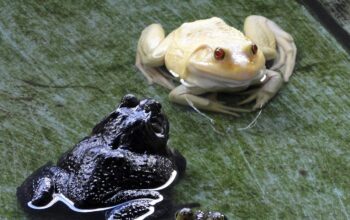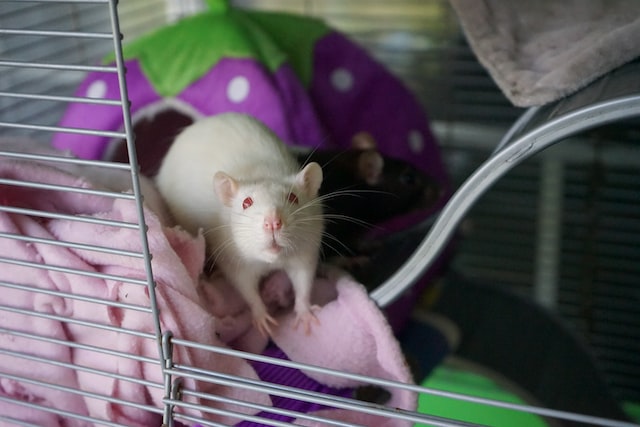
Are you intrigued by the mysterious and captivating creatures known as albino rats and mice? Have you ever wondered why their fur is white or if their eyesight is different from other rodents? Get ready to uncover the science and mystery behind these unique animals. In this article, we’ll explore the world of albino rodents and discover the truth about these fascinating creatures.
How Rare is an Albino Mouse?
Did you know that rodents make up almost 40% of the global mammal population? Only 2% of albinism occurs in any species naturally. However, the albino lab mouse has a selective, artificial breeding history to be predominantly albino. Which is pretty cool.
Since the albino allele is a recessive gene, two albino parents should produce 1 albino in 4 offspring. However, since the albino lab mouse has been bred since at least the 1900s (and suspected far prior), the results are now higher. In a 2007 study of the albino phenotype using Kunming mice, 9 of 11 injected fertilized eggs were born albino.
According to an origins paper on albino and hooded (piebald) rats published in 2012, the rat was the first mammal domesticated for testing since the 1850s. However, it’s unclear when breeders first bred for the albino gene specifically.
Basically, we made more rats and mice albino for scientific testing and truer results in that testing.
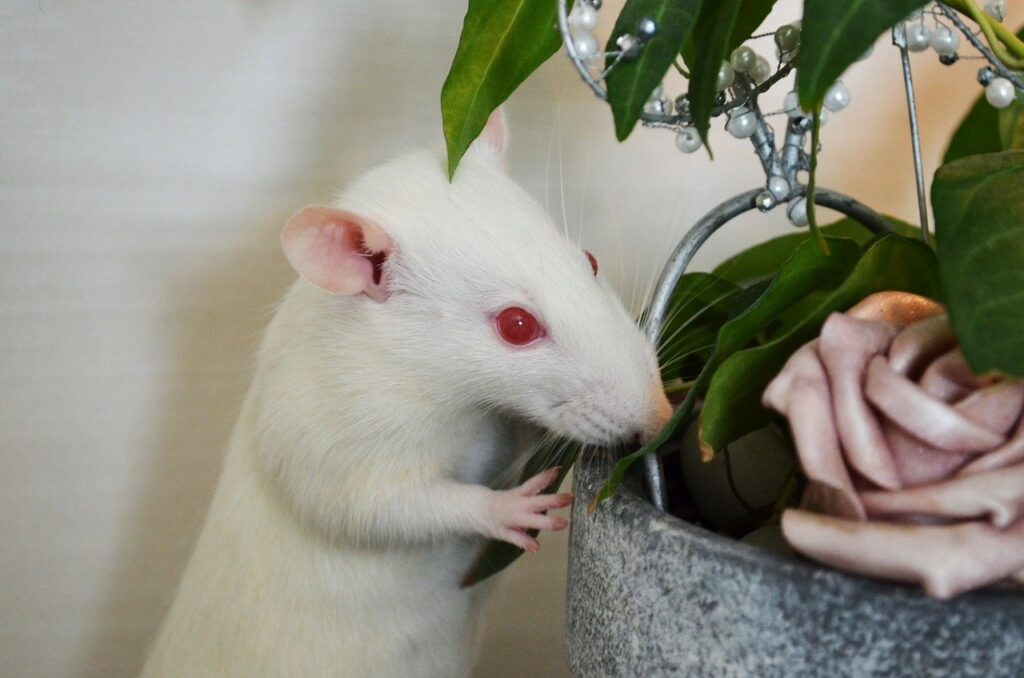
Why Do Albino Rats and Mice Have Red Eyes?
What makes albino rats and mice so unique? Two of the most noticeable physical characteristics of these creatures are their white fur and red eyes. This odd yet captivating appearance is a result of albinism, which is caused by having two copies of a mutated tyrosinase gene. This mutation referred to as “small c”, results in an inability to produce melanin – the pigment responsible for colors such as brown, black and yellow.
But why specifically do albino rats and mice have red eyes? It’s all thanks to the amount of light that enters the eye. When there are no pigments present in the iris (the colored part of your eye) it causes more light to be scattered back out – resulting in a deep crimson coloration.
Breed of Lab Mice
Are you curious about the breed of lab mice? Wistar and Sprague-Dawley are two common rat strains used in a variety of scientific experiments. Meanwhile, lab mouse strains use letter and number combinations to indicate the breed, such as C57BL/6 or BALB/c. Other mice strains are the mus musculus domesticus and the mus musculus musculus.
These unique labels may seem confusing at first glance, but they actually reflect important information about each particular strain. For example, Wistar rats have been bred to be genetically uniform which makes them great for general research purposes because it reduces confounding factors. On the other hand, Sprague-Dawley rats have been bred to produce large litters which is helpful when conducting breeding experiments.
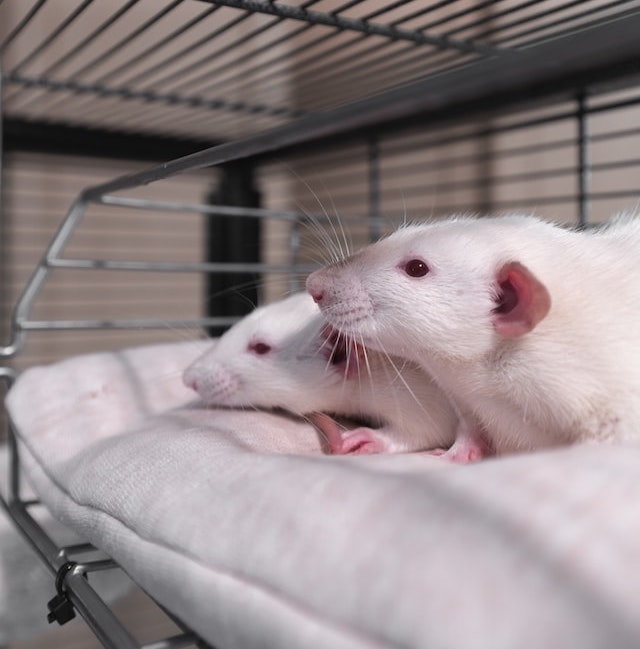
Using Albino Rats in Research
Albino rats and mice have been used for research for decades, allowing scientists to make amazing discoveries. From the development of new medications to the study of behavior, albino rodents play a key role in scientific research. But why?
The answer lies in their unique genetics. Albino rats and mice are lab-bred specifically for use in research, meaning they are all genetically identical. This makes it much easier to control variables when conducting experiments since the subjects being tested would be almost identical. Additionally, albino animals stand out more against dark backgrounds which makes it easier to observe during experiments and take crucial measurements such as heart rate or body temperature.
Sprague Dawley (albino rats) eat human food and digest similarly with similar organ systems. They’re clean, gentle, handle well and cageable. They grow quickly as well, again, easily usable for research results. Pet store or wild rodents create inconsistent results compared to research-bred rodents.
So now you know. The next time you see an albino rat or mouse at your local lab, give them some respect – they’re helping advance science with their unique traits.
Are Albino Rats and Mice Blind?
If you’ve ever wondered if albino mice are blind, the answer is yes – but their vision isn’t as bad as you might think. Mice and rats typically have poor eyesight anyway, so albinos don’t fare much worse. Because they don’t have pigmentation in the eyes to protect them, that eyesight is even more tenuous. In fact, their vision is around 20/2000 human eyesight, making them legally blind.
But that doesn’t mean they can’t see anything. They still have some degree of sight and can detect changes in light or movement to help them get around without bumping into walls or furniture. There are even reports of albino mice being able to recognize familiar objects by touch.
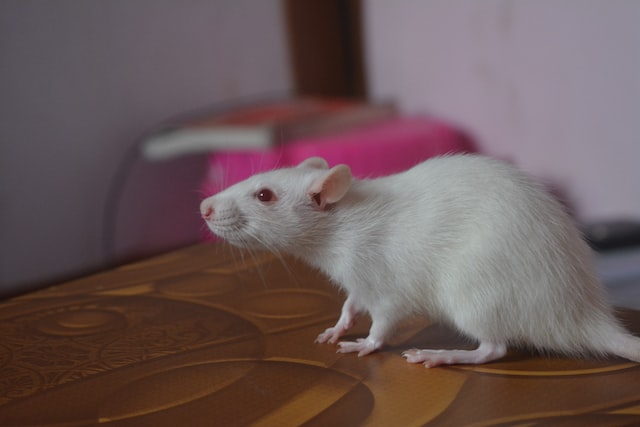
Albino Mice in Society
Mice are the ultimate social creatures, providing hours of fun and companionship for their humans. If you’re considering adding a mouse to your family, it’s important to consider whether your pet should live alone or with a friend. In most cases, two mice living together is ideal – just make sure that both are the same gender if you don’t want them breeding.
Albino mice are especially social animals, and they thrive when they have the companionship of another mouse. Not only do they enjoy playing together and engaging in various activities, but their relationship helps reduce stress levels too – something which can be beneficial for their health. Even though these cute little creatures may be content alone at times, loneliness can become an issue if left unchecked.
How Long Do Albino Mice Live As Pets?
Are you thinking of getting a pet mouse? Before you do, take the time to read up on how to properly care for and house albino mice. These furry little friends are fantastic companions and can live for about three years, so it’s a fairly long-term commitment.
It’s worth learning all about them before bringing one home. Albino mice require plenty of space in their enclosure – some experts suggest that an aquarium with bars is best – and should have access to food and water at all times. They also need bedding material like shredded paper or sawdust so they can make themselves comfortable.
Additionally, these rodents love running around and playing, so be sure to give them plenty of toys like tunnels, ladders, and exercise balls to keep them entertained.
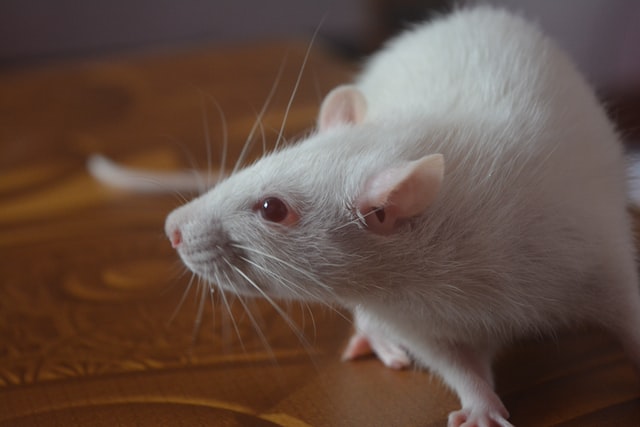
Do Mice Know Their Owner?
Do mice know their owners? Yes, they do. Although mice don’t have the best eyesight, they recognize and bond with their humans in other ways, making them pretty good pets.
Mice are known to recognize voices and scents. Once a mouse has been exposed to its owner’s voice or scent multiple times, it will begin recognizing them when they approach. This is why many pet owners like to talk or sing to their mice—it helps them form a bond with their furry friends.
But that’s not all; mice also have excellent memories. They remember which foods make them feel good, the locations of food sources in the home, and even people who have been kind to them in the past. All these factors help create strong bonds between humans and mice that can last for years.
What About Rats? Do They Know Their Owners?
It’s a question that has been on the minds of many pet lovers everywhere. Well, it turns out that these furry little critters may be smarter than we give them credit for. Studies have shown that rats not only become attached to each other but they also form strong bonds with their human guardians. They are even known to love their own families and show unconditional affection towards their owners.
Not only do they return as much affection as is given to them, but they are also capable of understanding moods and emotions. Rats have an uncanny ability to create a bond with humans due to their intelligence and social behavior. From playing games such as tag or hide-and-seek, to cuddling up next to them during bedtime, these small animals will make sure you feel loved.
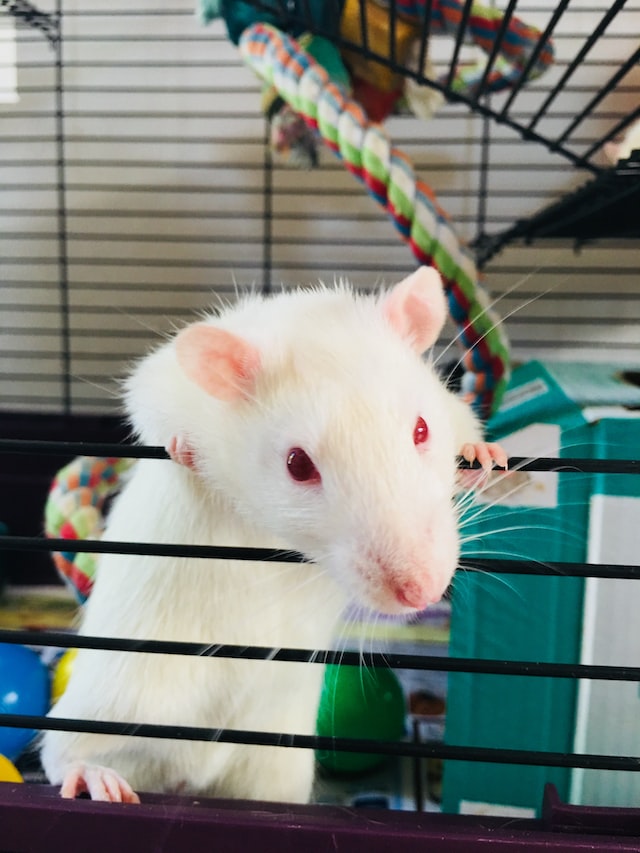
Low-Maintenance Love
If you’re looking for a pet you can hide in your pocket, set on your shoulder while you type and don’t want to worry about destroying your house, consider an albino rat or mouse. They’re intelligent, low maintenance, and they develop affection for their owner like other animals. While they’re still a long-term investment, 2-3 years is short-term compared to a cat, so it’s not a massive time investment. They can be fun and entertaining. Check them out. You might discover a new friend.
